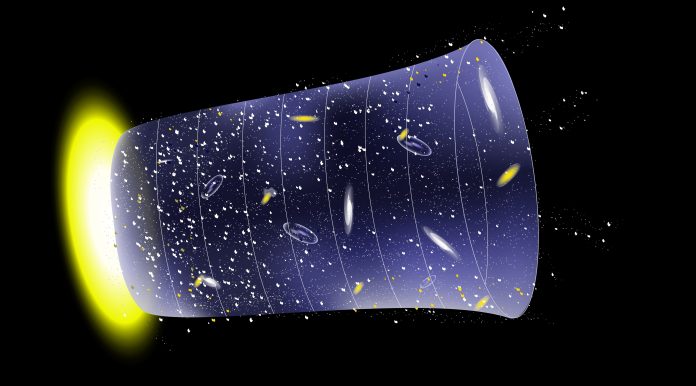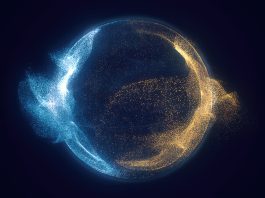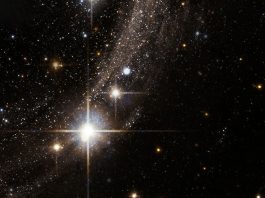A team led by a member of Tokyo Metropolitan University have made advances in the search for dark matter, observing galaxies using new spectrographic technology and the Magellan Clay Telescope.
With a mere four hours of observations, precise measurements in the infrared range have set new limits on the lifetime of dark matter.
Their findings highlight the crucial utility of their technology and extend the search to less explored parts of the spectrum.
Inconsistencies in the search for dark matter
Over the past century, cosmologists have grappled with an apparent inconsistency in what they saw in the Universe. Observations of the rotation of galaxies, for example, imply that there is a lot more mass out there than we can see.
Physicists have been calling this “missing” mass “dark matter.” What makes the search for dark matter phenomenally difficult is the fact that not only can we not see it, but we don’t have a clear idea of what we are looking for.
Now, researchers have begun to use a combination of models and state-of-the-art observations to put limits on the properties that dark matter might have.
In a recent development, a team of scientists from Japan led by Associate Professor Wen Yin from Tokyo Metropolitan University have used a new spectrographic technique to observe light arriving from two galaxies, Leo V and Tucana II.
They used the Magellan Clay Telescope in Chile to collect light arriving on Earth, paying close attention to the infrared region of the spectrum.
New techniques to improve a difficult search
The team focused on a promising candidate in the search for dark matter, the axionlike particle (ALP), and considered how it “decays” and spontaneously emits light. Leading theoretical models make the near-infrared part of the spectrum a particularly promising place to look.
However, the infrared is also a crowded and confusing part of the electromagnetic spectrum. This is because of the vast range of sources of noise and interference from other sources.
Examples include zodiacal light, the dim scatter of sunlight by interstellar dust, and light emitted by the atmosphere when it is heated by the Sun. To get around this, in their previous work, they proposed a new technique which uses the fact that background radiation tends to include a broader range of wavelengths, whereas light from a specific decay process is more strongly skewed to a narrow range.
Just like light spilling off a prism gets dimmer as different colours are spread thinner and thinner, decay events confined to a narrow range get sharper and sharper.
Various state‐of‐the‐art infrared spectrographs—such as NIRSpec on the James Webb Space Telescope, WINERED on the Magellan Clay Telescope, and many others—can be used to implement this technique, effectively turning these instruments into excellent dark matter detectors.
Stringent limits on the lifetime of dark matter
Thanks to the precision of the team’s technology (WINERED), they were able to account for all the light they detected in the near-infrared with significant statistical accuracy.
The fact that no decay was found was then used to set upper bounds on the frequency of these decay events or a lower bound on the lifetime of ALP particles. Their new lower bound in seconds is 10 with 25 to 26 zeros after it, or ten to a hundred million times the age of the Universe.
The finding is not only significant because this is the most stringent limit yet for the lifetime of dark matter. The work uses cutting-edge technology from infrared cosmology to address problems in fundamental particle physics.
While their conclusions are based on stringent analysis of the data so far, there are hints of anomalies or “excesses” which offer the tantalising prospect of actual detection of dark matter with more data and more analysis.
For now, the search for the missing piece of our Universe continues.





